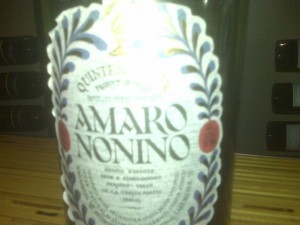Char No. 4 Redux

Back to Char No. 4 with some of my Brooklyn peeps. Like my last trip, I looked at the menu online to
prepare. This time, we sat at the bar and our lithe bartender, Charlotte, repeatedly broke my heart as I rattled off a litany of whiskeys from my online research only to find out that they were out of each one. Battered, but not beaten, I settled in to studying the whisk(e)y list. Although not planned this way, this trip to Char No. 4 became an exercise in inexpensive (mostly) American whiskeys.
I started with the A. H. Hirsch 16yo straight bourbon. I’ve been wanting to try this for a while. This bottling is the very last of the whiskey from the old Michter’s distillery in PA. I don’t really know the history of the distillery, but I cannot believe that they failed due to inferior product. It is always harder for an “off-the-slab” whiskey to compete against the Kentucky bourbon giants, but this whiskey really stands up on taste. The nose is complex and delicate with distinct notes of corn, nuts (cashews?), and Christmas spices. The palate delivers on the promises of the nose and adds some extra sweetness and a little salt. Overall, this is a very balanced whiskey and I encourage you to look for it (not one of the cheap ones though).
Next, we decided to do a little experiment. We ordered some Rebel Yell and some Rebel Reserve for a comparison. Rebel Yell is a wheated bourbon that smells terrible and luckily tastes like nothing. It makes me think of drinking distilled water in the desert sun (wet and tasteless that evaporates the moment it hits your tongue). However, the Rebel Reserve is very drinkable. Rebel Reserve is also a wheated bourbon, but it is made in small batches with a different recipe. The nose is like a lady’s perfume on fresh linen. The palate is smooth and sweet. You can definitely taste the wheat influence. I would not put this in the same class a some of the really high end bourbons, but is definitely stands up to some whiskeys that are twice the price. A very good every day bourbon and an unbeatable price (around $20).
We followed with the mouth numbing Old Weller Antique (107 Proof). With a little water or ice, this is very nice. Plus, it’s almost like getting two whiskeys for one (and for $20!).
Ezra Brooks Single Barrel (12yo) was next on the list. The palate is buttery and sweet with hints of rye and spice. This whiskey doesn’t stick around long, but the finish is pleasant without much burn. The price won’t burn you either (around $30).
I had intended the night to end with the Ezra Brooks, but one of my compatriots insisted on treating me to a dram of Pappy Van Winkle’s Family Reserve 23yo. Who would say no to that? This was a great whiskey (not cheap). However, the consensus around the table was that the 20yo is better. The extra three years smooths the edges a little too much.
I know that most people don’t have access to a place like Char No. 4 in their neighborhood, but I encourage you to seek out some of these cheaper whiskeys and let me know what you think.
BTW – I think I figured out the pricing at Char No. 4 (I have complained of gouging before). The selection was built on the owner’s personal stock. Therefore, much of the pricing is collector pricing that has little to do with the list price of the whiskey. You may find things there that you can’t find anywhere else, but you will pay dearly. But what’s money compared to a once in a lifetime dram? That’s for you to decide.
Drink well and drink responsibly.
-Matt


